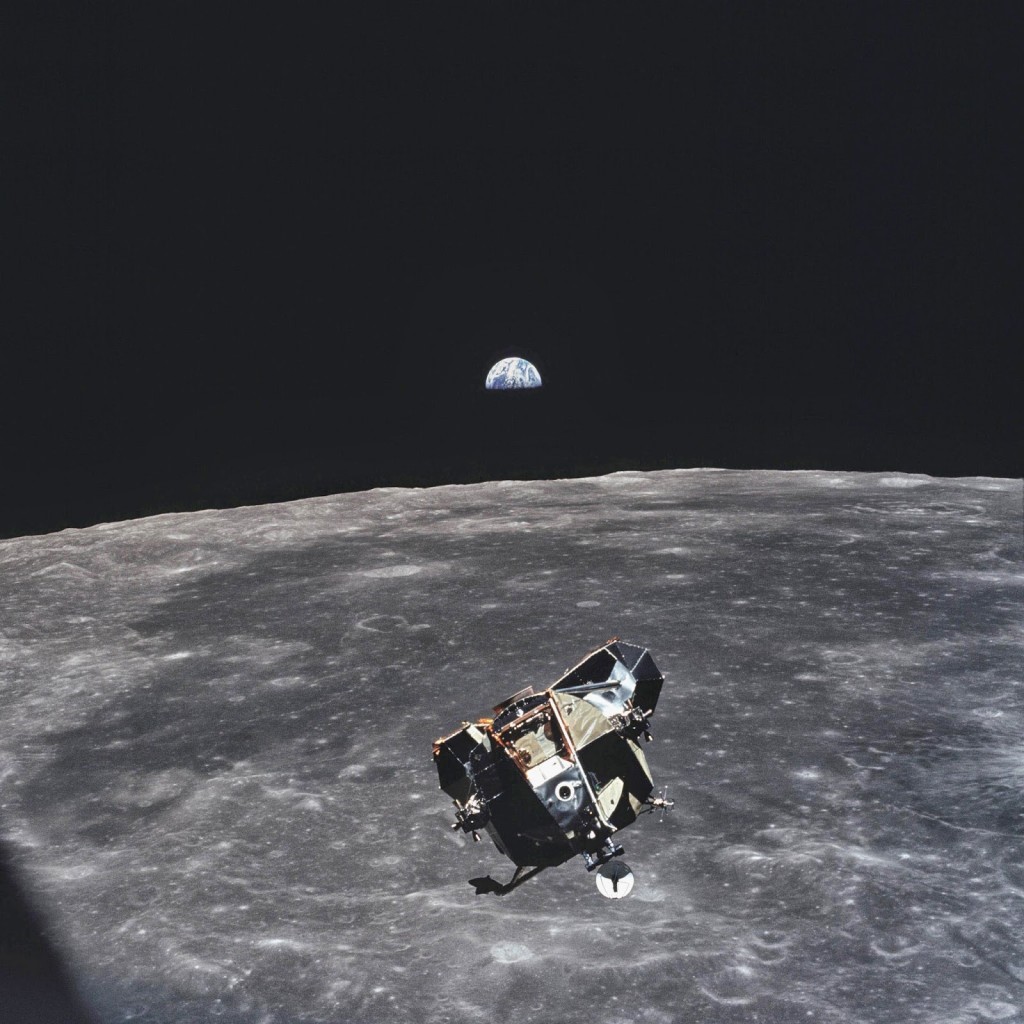
To listen to this reflection as a podcast, click here.
The picture above is beautiful. And also disquieting.
Neil Armstrong and Buzz Aldrin are hurtling toward the surface of the moon in the Apollo 11 Lunar Module on July 20, 1969. Within a few hours, Armstrong will take his “one small step for man, one giant leap for mankind.”
No one suspected at the time that the Apollo program would help trigger the modern environmental movement.
The “Earthrise” image in this and many other pictures captured from spacecraft orbiting the moon – especially those taken eight months earlier by Apollo 8 astronaut Bill Anders – seemed to confirm, as never before, that our planet is a special place.
In the words of Space.com journalist Mike Wall, the Earth appears as “a lonely and fragile outpost of life suspended in an endless, inky-black void. That new perspective jolted many people awake and lit a fire under others, helping the nascent environmental movement gain cohesion and momentum.”
The very first Earth Day arrived the following spring, on April 22, 1970. About 20 million Americans – an impressive 10% of our population at the time – rallied and marched in an effort to motivate political leaders.
Good things began to happen.
Before the end of that year, the Nixon administration authorized the creation of the EPA (Environmental Protection Agency) and passed a number of environmentally focused laws, the likes of which had never been seen before. The Clean Water Act came in 1972 and the Endangered Species Act a year later.
Best of all, Earth Day became (appropriately enough) a global event beginning in 1990. It’s estimated that more than 1 billion people in 193 countries will participate in some kind of Earth Day activity tomorrow.
That’s not a bad record of accomplishments for a few color snapshots of our home planet.
But there’s another reason the picture you see above is like no other. Every human being who has ever lived – taking into account the many different resting places of the dead – is contained in this single photograph.
Except for two.
Michael Collins, the third Apollo astronaut, remained behind in the Command Module and snapped this picture.
Then there’s that other person who is missing, even while somehow being everywhere in the picture.
Jesus of Nazareth invested something like three decades on that “half-Earth” in the photograph. Which means that ours isn’t just a home worth saving. We are citizens of the visited planet. Jesus’ followers, who today comprise about one-third of the world’s population, claim that he’s still alive. And fully human. And dynamically active. Even at this moment.
The present form of his body transcends what we associate with material existence.
The book of Acts tells us that Jesus ascended into heaven, in full view of his disciples, 40 days after the resurrection (see Acts 1:1-11). This wasn’t a way of saying that Jesus is now physically up there somewhere amidst the clouds. Rather, it affirmed that at a particular moment he decisively left the sphere of human history – at least for now.
The word that best describes his current reality is “mystery” – which is another way of saying we really don’t have the words or the categories to make sense of everything.
What we do know is that his ascension means he’s momentarily disappeared from the picture.
Except…
No picture is ever really complete without him.
